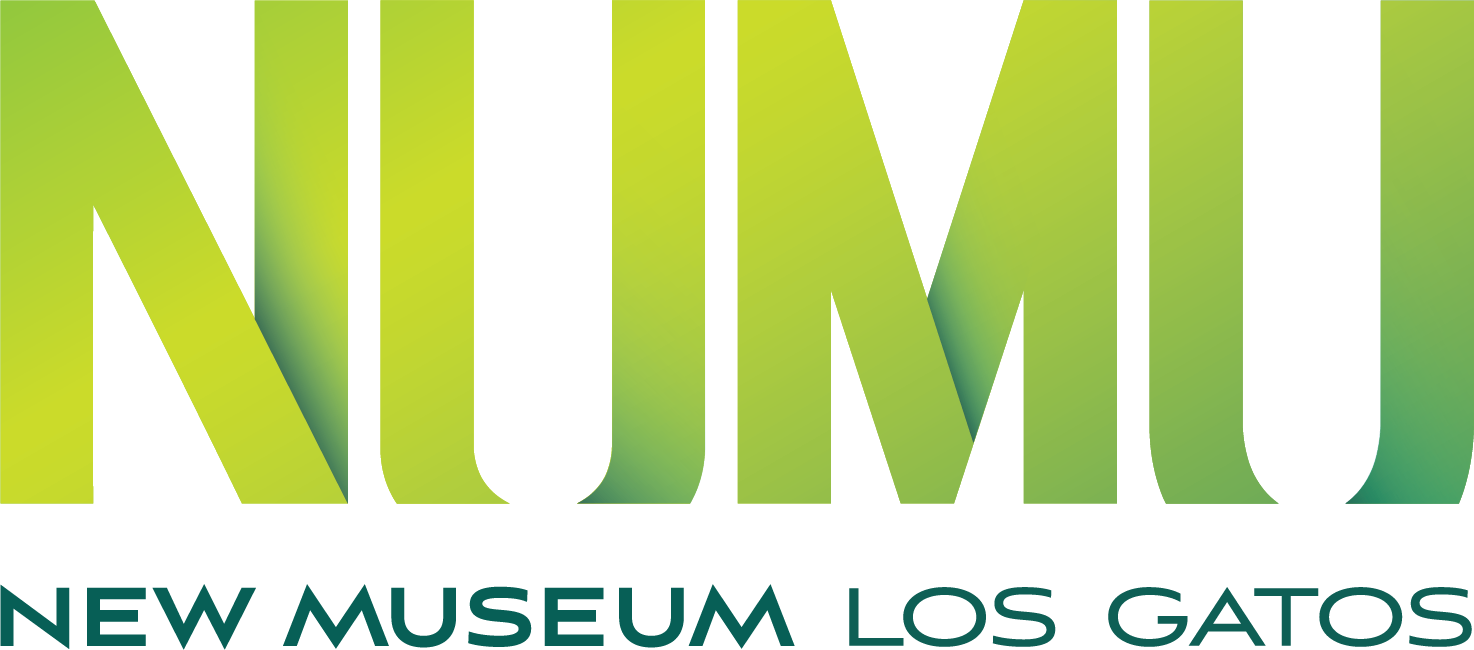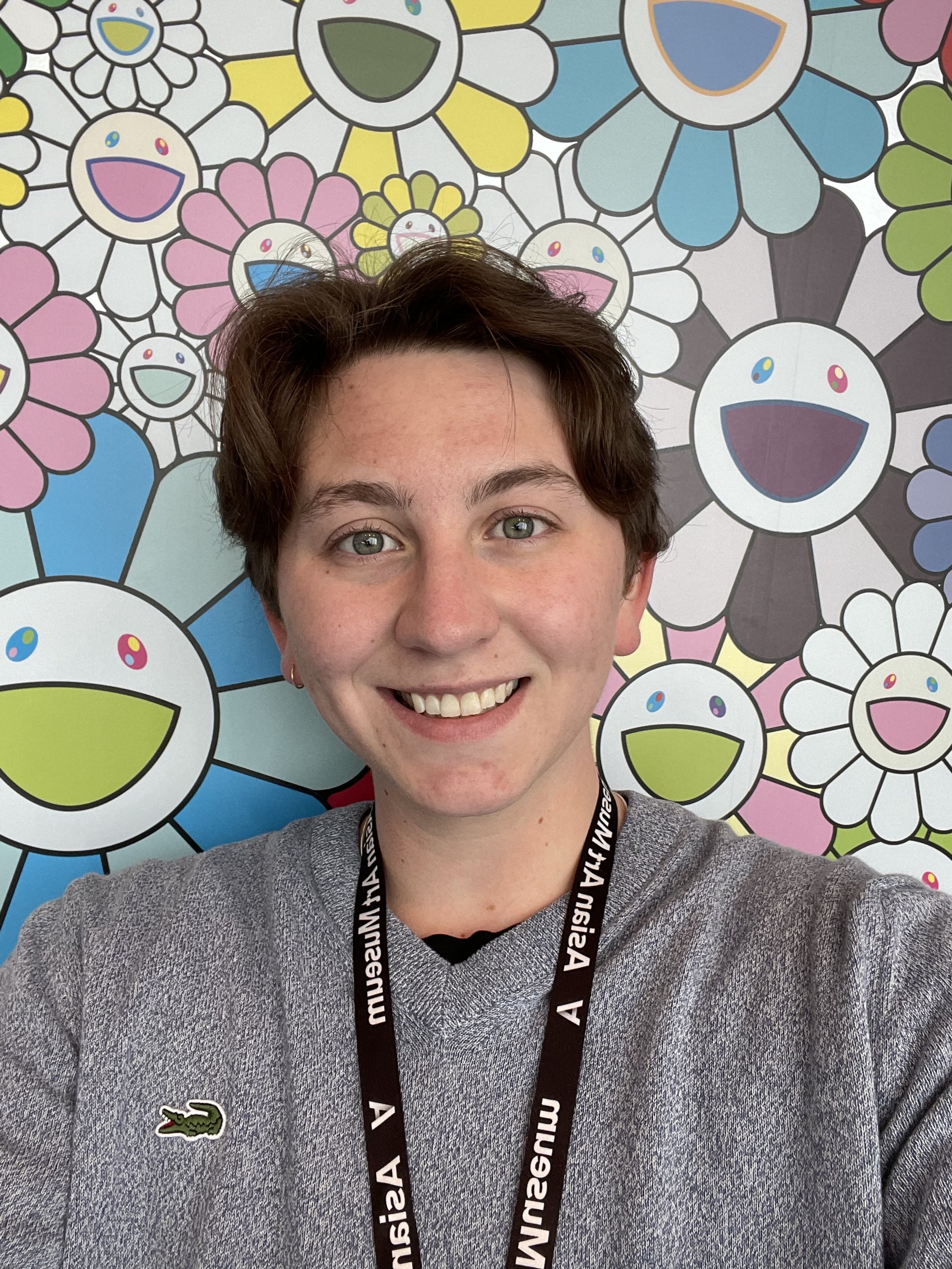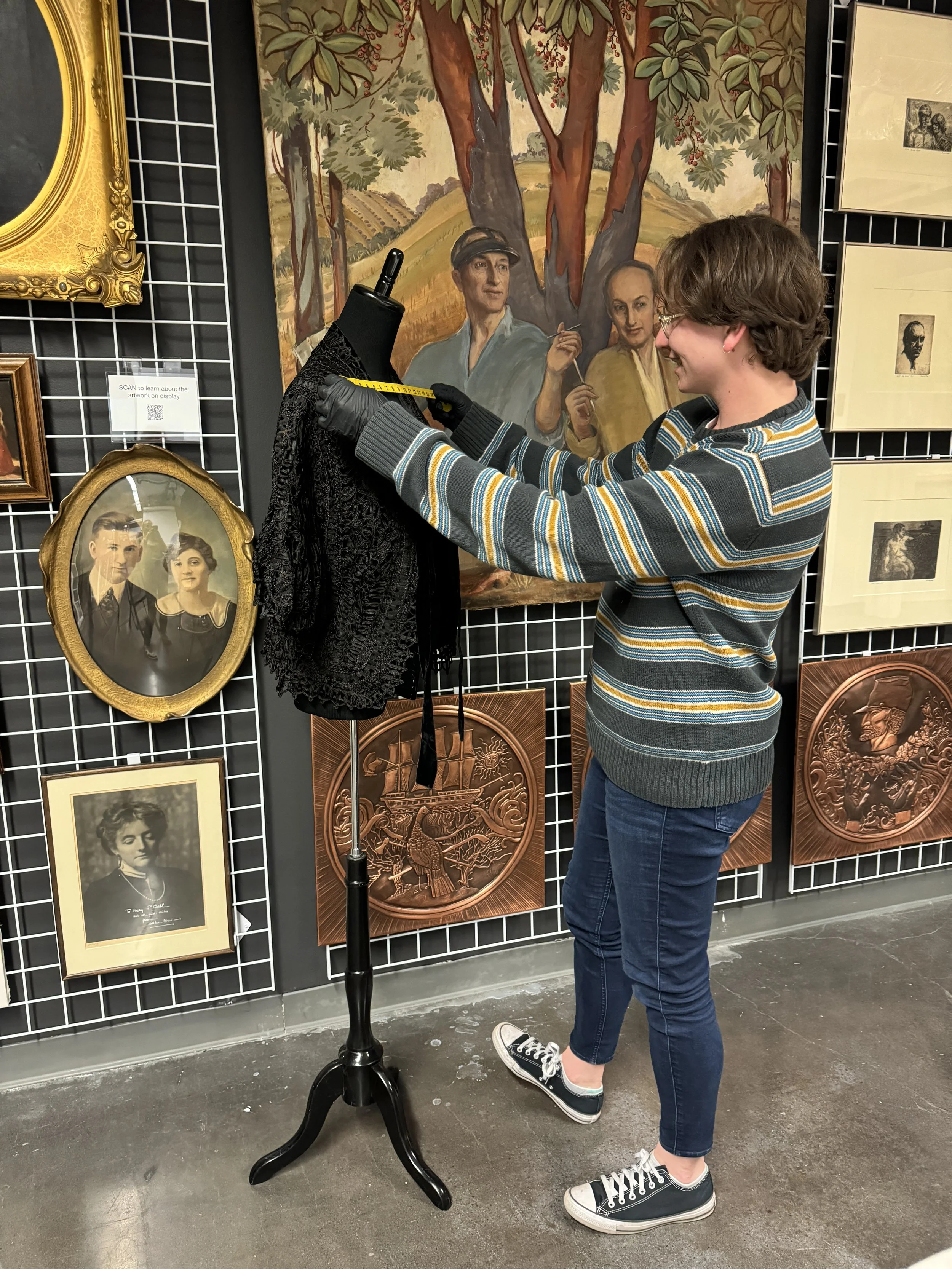About Me
Hello everyone! My name is Teddy Hardgrove. I am 24 years old and have a B.A. in Anthropology from UC Berkeley and an M.A. in Museum Studies from University of San Francisco. I’m originally from the greater Los Angeles area but have since transplanted to the Bay. My undergraduate focus was in archaeology, and my graduate focus was in archives and collections management. I wrote my thesis on law and ethics as they apply to oral histories in archives. In my free time, I enjoy visiting museums, listening to music, playing piano, and collecting zines and vintage ephemera, such as postcards. I also volunteer at the GLBT Historical Society Archives on a weekly basis.
My Time at NUMU
Over the course of my internship so far, I’ve cataloged the last parts of the Frank and George Collection, particularly documents related to the caretakers of Frank and George’s estate and violinist Yehudi Menuhin. These included legal documents, newspaper clippings, and photographs. I also had the pleasure of cataloging Frank and George’s guestbook from the mid-50's to mid-60’s and a pair of gorgeous color pastels depicting the couple.
More recently, I’ve cataloged a wide variety of objects such as an indigenous ceramic platter from the 1840s, stylish mid-century hats, and Victorian quilts. I have also assisted in setting up the ArtNow exhibit, arranging objects for a painting class along with many other day-to-day tasks around the museum.
Takeaways
Throughout my tenure at NUMU, I have built my skills in collections management and encountered many unique challenges, such as cross-referencing provenance information from many different sources, as well as interesting objects with compelling stories to tell, such as the Samurai Battle Helmet highlighted in another article.
This internship has reinforced the fact that one of the greatest barriers to excellent collections care is lack of provenance information. Provenance is the story of the object- where it was made, who made it, who owned it and how they came to possess it. This information is important to enrich a visitor’s experience and enhance researchers' and museum staff’s understanding of the object. Information is also important for objects in case they were stolen or coerced from their original owners’ possession. With provenance, items can be restored to their rightful owners after many years. Laws such as NAGPRA and CalNAGPRA aim to restore indigenous objects to their communities of origin, and there are similar restitution laws for Nazi-looted art. Small museums and volunteer-run organizations must take great pains to thoroughly document provenance for these reasons.
-written by Teddy Hardgrove




